Mark Amery – 18 April, 2011
Shepherd is known for his history paintings. Here the work is less obviously of this genre, yet if a particularity of location and subject doesn't come to the fore it may be because Shepherd comes across as keen to make an environmental political point stridently - without being preachy.
The pervading colours of Michael Shepherd’s paintings on panel are cow shit and sour milk. This is clearly deliberate. The works pull no punches in their depiction of our landscape as poisoned and furrowed to the point of curdled desolation. Yet equally the works are so beautiful I’d very happily live with them.
Looking at this exhibition I get a companion image in my head: of the rutted muddy quagmire of battlefields in France and Belgium after World War One. And the more I look at the work the more this makes sense.
Firstly, probably in the back of my mind are Shepherd’s own brown tinted paintings and their interest in the remnants and impact of war on landscape and culture. Secondly, the works also key into some early Shepherd influences. Not only is the dark earthy palette reminiscent of 19th century painter of rural French life Gustave Courbet, but Shepherd’s aim to show with rough, elegant expression the farming landscape as it really is, is in line with Courbet’s realism. Shepherd dramatises environmental truths as Courbet did social ones.
The time for a pastoral treatment of the landscape and ennobling of its workers however is clearly over. In Shepherd’s paintings this isn’t a landscape controlled by hard working peasants, but machines and chemicals.
The term Pharm used in the exhibition title, and in the title of several works that depict the menacing and spindly robotic limbs of chemical or water distribution vehicles, appears a combination of the phonetic spelling of farm and an abbreviation for pharmacology. A work entitled Obstacle depicts close-up a grasshopper, whitened as if being washed away. Occasionally to deepen the tension there are reminders in the background of the impressionist romance of nature. But generally it has been drained out; an obstruction to productivity.
The opening large painting Total presents two men (perhaps father and son) in the middle of a brown, empty rutted landscape. This landscape is eloquent itself in its play with paint in the abstract with a limited palette. Like an ocean leading us to a stormy sky. The two men look down on the pages of a book they are holding between them. The painting is open to a story of the past, present and future being inserted, but it also recalls in composition Jean Francois Millet’s well known peasant in landscape works The Angelius and The Gleaners. In Total Millet’s prayer for the future has turned to a contemporary study of the past.
While acrylic on panel, Shepherd’s painting technique remains steeped in history - for example the dark corpse of trees beside a bronzing sky in Block. Yet the exchange between the illustrative and abstract that he draws from painting pre 20th century cubism, is joined by a modernist geometric clarity of line in the depiction of human constructions on the land. These play to our nostalgia for the engineering feats and farming lifestyle of the last century: a collection of white shapes that make up a set of buildings next to a dam (Nostalgia), for example, or a post world war two farmhouse, burning white and sitting isolated on a furrowed plain before distant hills. Even in a painting of what appears to be a laboratory wash basin, the elegant black hoop of a tap appears like a geometric abstract motif, drawing us into a tension in the work between painting styles and what is being discharged, and why.
These paintings then are charged. There are painterly cultural conversations across recent and past history going on. They ask us to remember the past and learn from it.
Paint is played with as liquid, veils and drops of paint moving down over the picture plane. This evokes a mood of rainy despondency, as well as visualizing the pollution of the environment. I’m reminded in their mood, technique and subject matter of recent mud paintings of the Manawatu by Gary Freemantle.
Shepherd presents us with anxious objects (to borrow Harold Rosenberg’s 60s phrase) as cultural signifiers. Here he gives symbolic weight to among other props the hay bale, the tractor and the measuring cup.
One unfortunate niggle with this show however is the rather gimmicky cutting of the left hand edge of the smaller panels so that they resemble pages torn from a looseleaf drawing book. This detracts rather than adds to the actual painting. There is already plenty of real tension provided in the provision of a white background, which the fluid paint messily drips and smudges onto.
Shepherd is known for his history paintings. Here the work is less obviously of this genre, yet Shepherd’s usual attention to research is clear. If a particularity of location and subject doesn’t come to the fore it may be because Shepherd comes across as keen to make an environmental political point stridently. It’s a credit to his work that he does so without being preachy, harnessing the power of paint to make us face the ugliness we have created in our surround.
Full portfolios of Michael Shepherd’s work have been rarely seen in Wellington - indeed I can’t recall a dealer gallery show here previously. This one is a real treat, and together with the rather interesting looking Scrabble with Janet (shown at Jane Sanders in Auckland in 2010 and considered in the latest Art New Zealand) suggests Shepherd is deserving of plenty of renewed attention.
Mark Amery
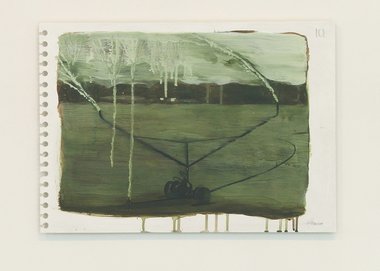
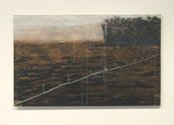


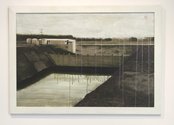
 Two Rooms presents a program of residencies and projects
Two Rooms presents a program of residencies and projects Advertising in this column
Advertising in this column
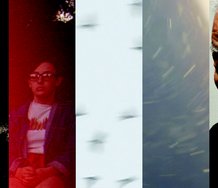
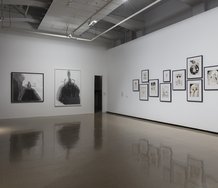
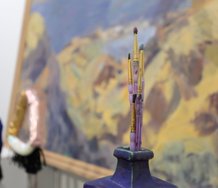
This Discussion has 0 comments.
Comment
Participate
Register to Participate.
Sign in
Sign in to an existing account.